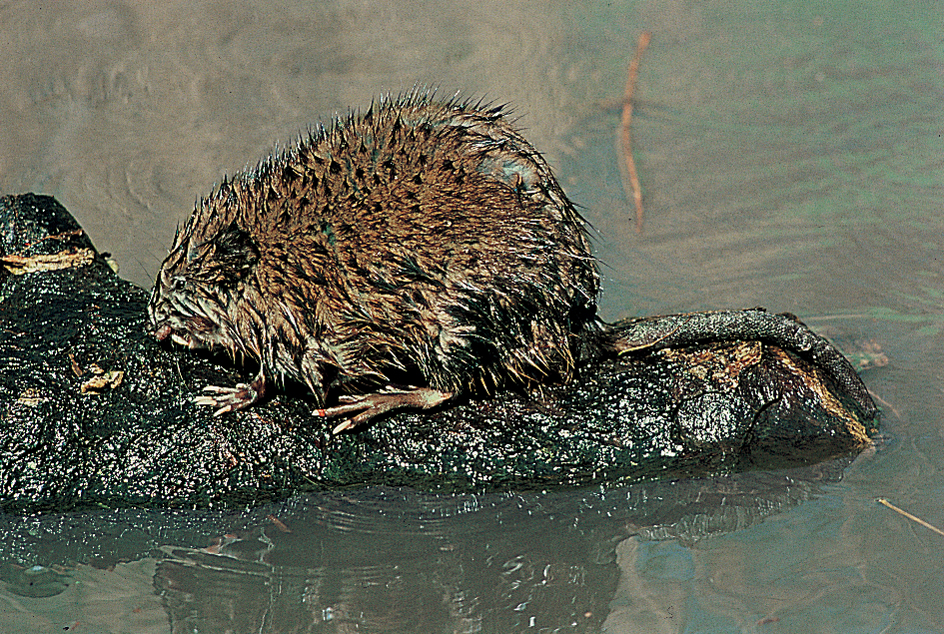Muskrat is an animal that lives near streams, ponds, and rivers. Muskrats get their name from the musklike odor they emit during the breeding season. They live in many parts of North America and have been introduced in some parts of Europe.

Muskrats are suited to life in the water. They use their scaly tails, which are flattened vertically, to help them swim and steer. Their hind feet are fringed with stiff, weblike hairs. Muskrats grow from 16 to 26 inches (41 to 66 centimeters) long, including a 10-inch (25-centimeter) tail. Their light brown fur is sold as “Hudson seal” after the coarse guard hairs have been removed. Muskrat meat, properly prepared, is tasty and sometimes is sold as “marsh rabbit.”
Muskrats live in burrows that they dig in the banks of streams. They often damage dikes and levees as they dig. They also make winter houses by plastering such plants as cattails and reeds together with mud. These houses stand out on the icy, snow-covered marshes. Muskrat houses usually have more than one underwater entrance.
Loading the player...Muskrat
Muskrats eat vegetation, especially bulrushes, cattails, and the roots of water plants. They sometimes eat clams, crayfish, and snails. Alligators, coyotes, hawks, minks, owls, and raccoons prey on muskrats.
Female muskrats give birth to as many as three litters of 1 to 11 young each year. As a result, the muskrat population of an area often increases rapidly. Muskrats are born blind and nearly without fur. The furred young are often called kits. Muskrats fight a great deal among themselves. Many of them travel about—even as far as 20 miles (32 kilometers)—to find new homes.
Muskrats are rodents. They are related to lemmings and voles but are larger than these animals. A small, round-tailed muskrat inhabits Florida.
